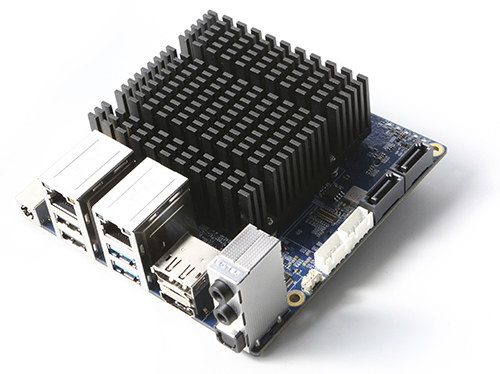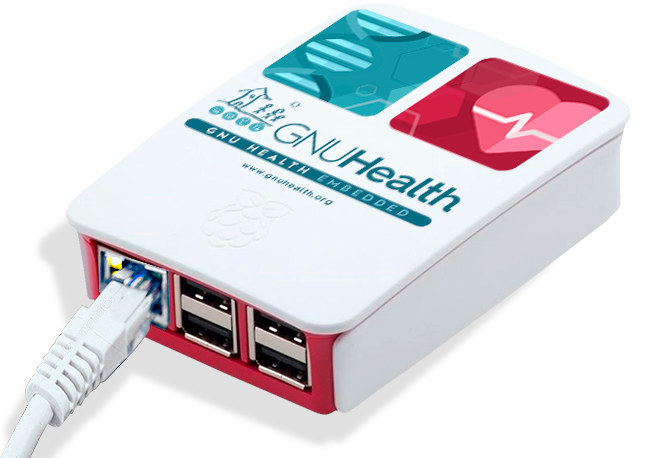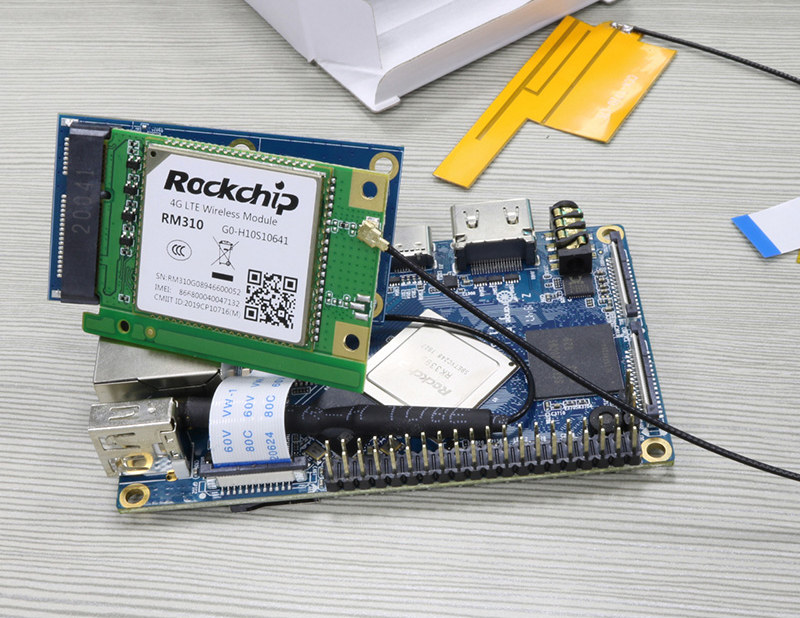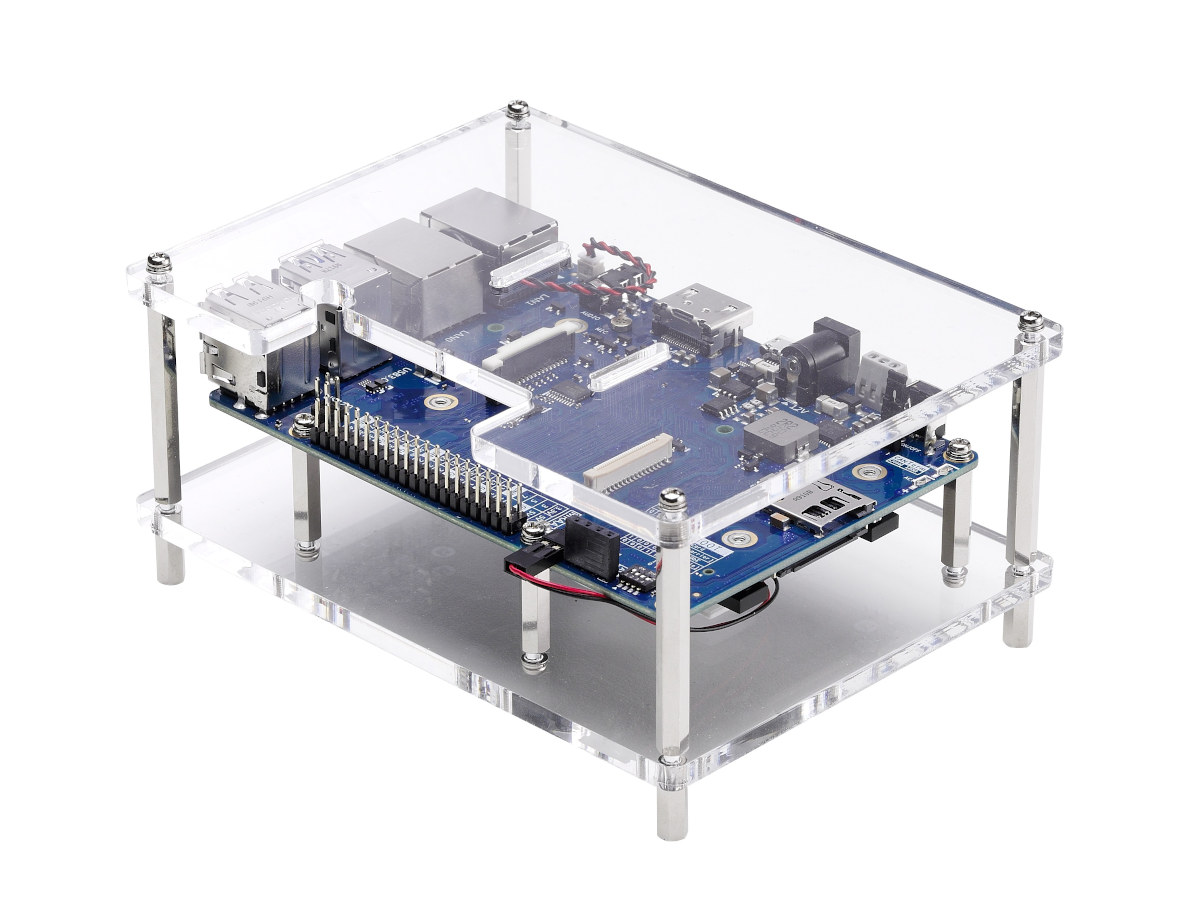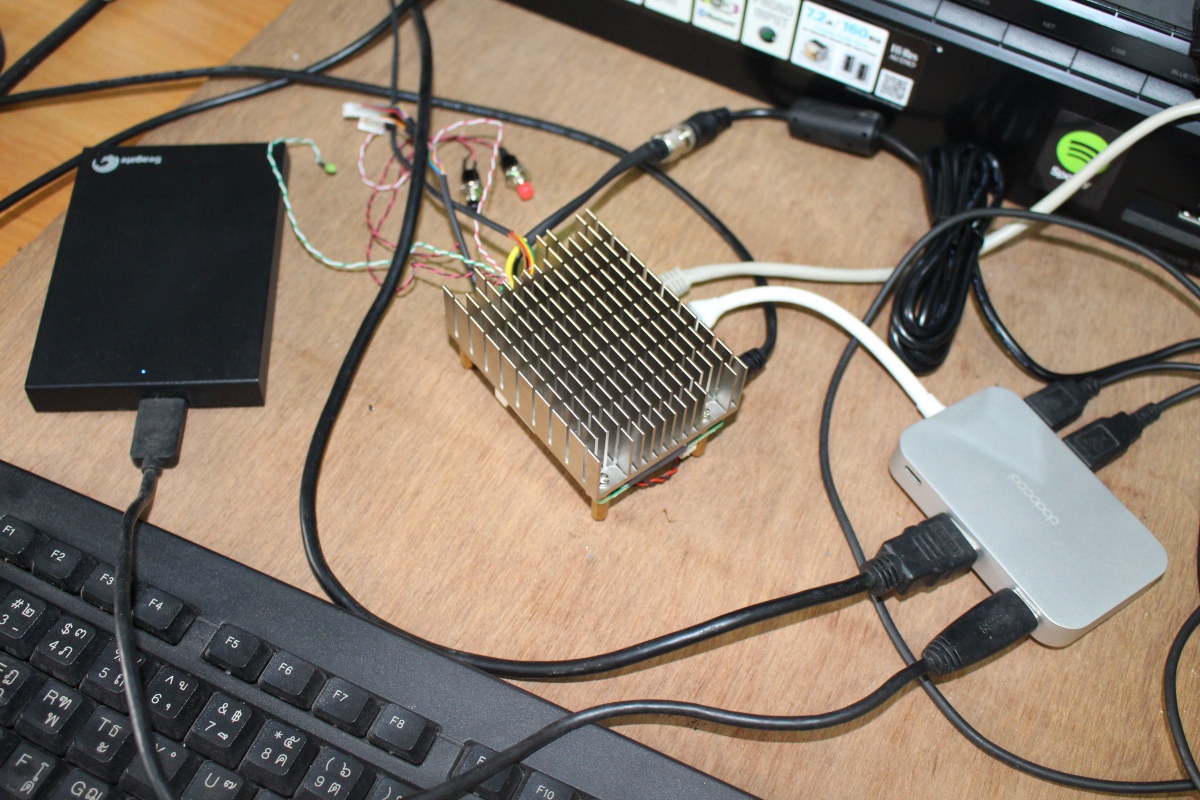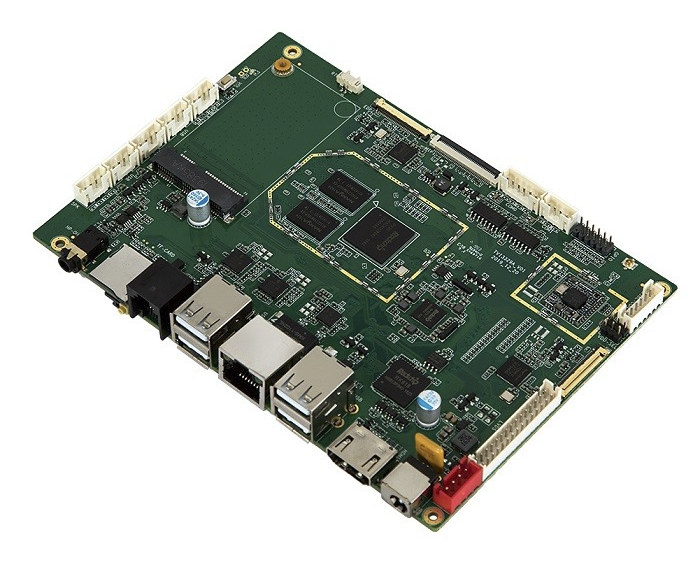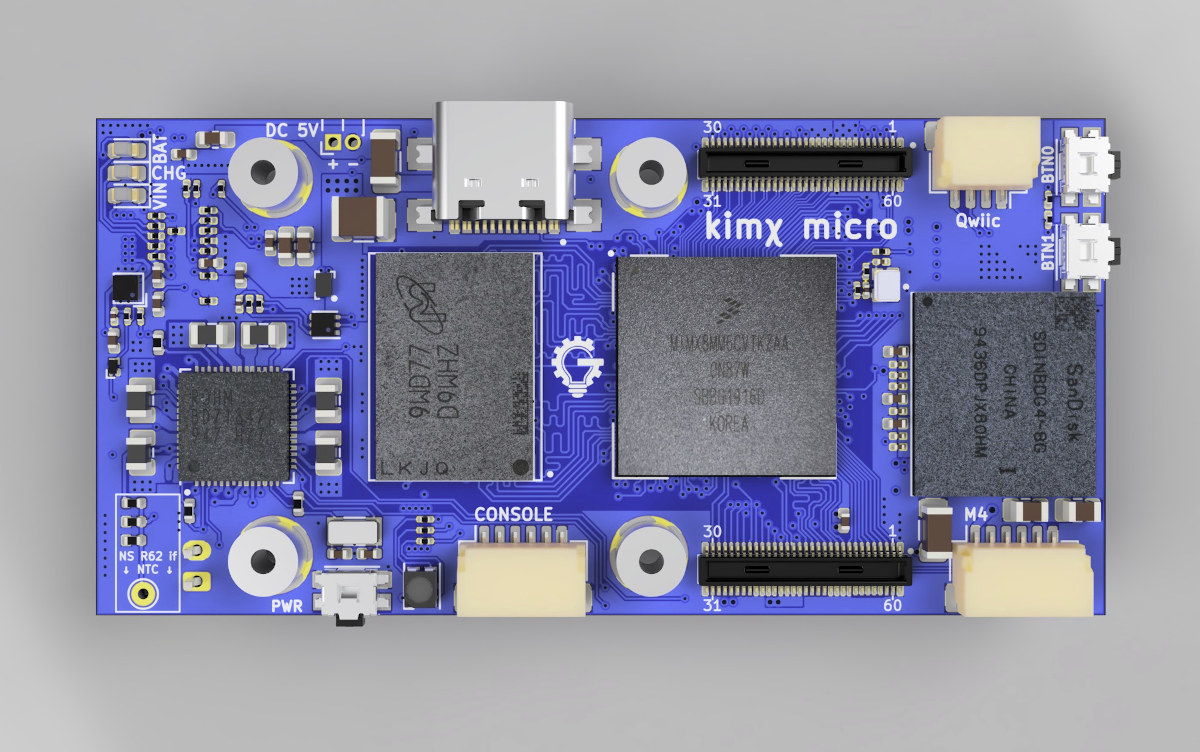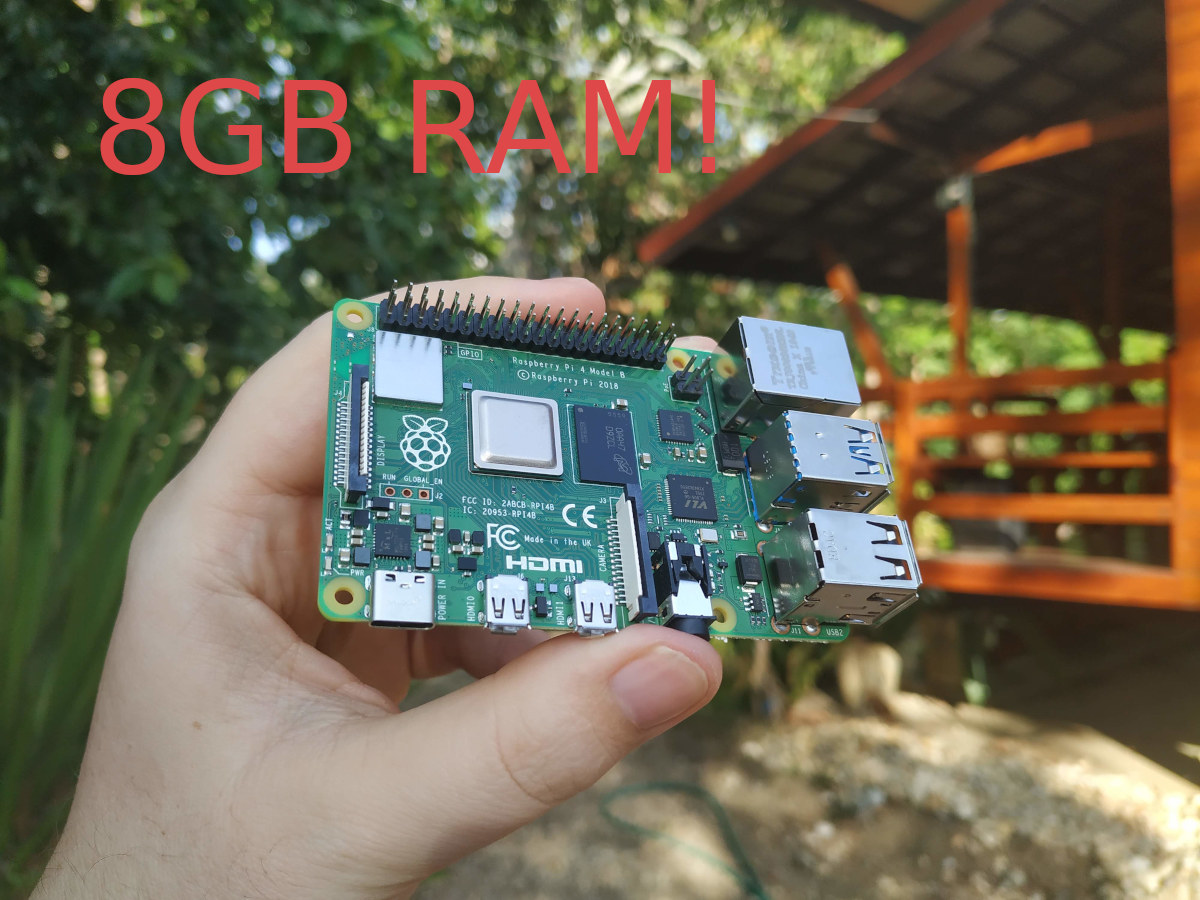Harkernel ODROID-H2 is an Intel Celeron J4105 Gemini Lake powered SBC that offers great value and performs reasonably well as we’ve seen in our ODROID-H2 Ubuntu review. But there’s an upgraded model coming soon with ODROID-H2+ getting a slightly faster Intel Celeron J4115 processor, 2.5 GbE networking, a couple of extra I/O on the header for USB 2.0 and HDMI CEC, and a change to the 12V SATA power circuit to improve the suspend-resume power control sequence of 3.5″ HDDs. ODROID-H2+ specifications: SoC – Intel Celeron J4115 Gemini Lake Refresh quad-core processor @ 1.8 GHz / 2.5 GHz (turbo single thread) / 2.3Ghz (turbo multi-thread) with 12EU Intel UHD Graphics 600 up to 700 MHz; Noted listed on Ark Intel just yet, but it’s real. System Memory – Dual-channel Memory DDR4-PC19200 (2400MT/s) supporting up to 32GB RAM in total Storage – M.2 PCIe 2.0 x4 slot for one NVMe storage, […]
GNU Health Embedded Open Source Health Platform Works on Raspberry Pi 3/4, and soon Olimex SBC’s
GNU Health (GH) is a free and open-source Health and Hospital Information System (HIS) that can manage the internal processes of a health institution, such as financial management, electronic medical records (EMR), stock & pharmacies or laboratories (LIMS). It is already used in various hospitals, health centers, and medical research facilities in various countries, most developing countries, across the world. The program would normally be installed on x86 servers running Linux or FreeBSD, but there’s also a version for Raspberry Pi 3 and 4 based on openSUSE called GNU Health Embedded, and work is being done to port the solution to Olimex OlinuXino SBC’s. Contrary to what the photo above implies, GNU Solidario does not sell the hardware pre-loaded with GNU Health Embedded, but you can download it for free from their servers, and if you want to support the project you could always make a donation. As I understand […]
Orange Pi 4 SBC Gets a $16 4G LTE mini PCIe Card based on Rockchip RM310
Orange Pi 4 SBC is one of the most cost-effective Rockchip RK3399 SBC’s, as it sells for as low as $50 with 4GB RAM, Gigabit Ethernet, WiFi, and Bluetooth, HDMI 2.0 output, etc.. The board also comes with a 24-pin PCIe connector that’s not of much use on its own, so the company introduced a $4 PCIe adapter board providing access to a standard mPCIe socket and a SIM card slot so you could install your own. 4G mini PCIe cards can easily cost around $50 or more, but Shenzhen Xunlong Software has now launched its own 4G LTE mini PCIe card based on Rockchip RM310 module and sold for $16 on Aliexpress, excluding shipping. mPCIe card and RM310 module specifications: Frequency bands LTE-FDD – B1, B3, B5, B8 LTE-TDD – B38, B39, B40, B41 WCDMA – B1, B5, B8 GSM – 850, 900, 1800, and 1900 MHz Data rates […]
ROScube Pico SBC Runs Ubuntu & ROS on Intel Atom or Rockchip PX30 Processor
ADLINK has launched ROScube Pico SBC designed for robotics projects and powered by either an Intel Atom x5 Apollo Lake processor or a Rockchip PX30 Arm Cortex-A35 processor via their SMARC-compliant system-on-modules namely LEC-AL and as LEC-PX30. Both models run Ubuntu and ROS/ROS-2 operating systems simultaneously, and the company also provides NeuronBot robotics development and demo kit based on the SBC. ROScube Pico SBC and Devkit If ROScube Pico looks similar it’s because it appears to be based entirely on ADLINK previously announced ADLINK Industrial-Pi (I-Pi) SMARC Development Kit based on Rockchip PX30, and Vizi-AI development starter kit based on Atom x5-E3940 SoC and Movidius Myriad X VPU. Those are the specifications listed for ROScube Pico: SMARC Module For ROScube Pico NPS-1 – LEC-AL with Intel Atom processor, Intel Movidius Myriad X AI accelerator, 8GB LPDDR4 RAM, 32GB eMMC For ROScube Pico NPS-4 – LEC-PX30 with Rockchip PX-30 quad-core Cortex-A35 […]
DFI Ryzen Embedded R1606G SBC Review – Part 2: Windows 10 Enterprise LTSC
DFI GHF51 is an AMD Ryzen Embedded R1606G SBC for industrial application that’s about the size of the Raspberry Pi Model B board, and after checking out the hardware in the first of part of the review “DFI GHF51 AMD Ryzen Embedded SBC Review – Part 1: Unboxing and Assembly“, I’ve now had time to play with the board running the pre-installed Windows 10 Enterprise LTSC operating system. DFI GHF51 Hardware Connections Since there aren’t any full-sized USB ports, you’ll need a USB-C hub to get started as you’ll probably want to connect a USB keyboard and mouse for development and testing, as well as a Micro HDMI cable to connect to a TV or display. I tried both MINIX NEO C Plus and Dodocool DC30S USB Type-C hubs, and the former did not work at all, while the latter mostly worked. I also connected an HDMI cable to the […]
Rockchip PX30 3.5-inch SBC Targets Automotive Infotainment, Retail PoS, and Digital Signage
While Rockchip RK3326 quad-core Cortex-A35 processor is found in ODROID-GO Advance portable game console, it was brought to my attention that there weren’t any RK3326 SoM nor SBC on the market. But Rockchip PX30, with virtually the same design, only adding support for dual VOP (dual independent display support), is already found on several system-on-modules including ADLINK LEC-PX30 SMARC module and ARBOR SOM-RP301. It turns out there’s also a Rockchip PX30 SBC courtesy of Shenzhen based TechVision “3.5’SBC-PX30-TVI3329A“. Specifications: SoC – Rockchip PX30 quad-core Arm Cortex A35 processor @ 1.5GHz with Mali-G31 MP2 GPU Memory – 2 GB DDR3L Storage – 8GB, 16GB, 32GB or 64 GB eMMC flash, MicroSD card slot Video Output & Display Interfaces HDMI output via RK618 chip Dual-channel LVDS via RK618 2x eDP Ports 1x MIPI DSI Port shared with eDP 2 LED Backlight header Support for USB touch panel 2x independent displays support Audio […]
Raspberry Pi Zero Sized Kimχ Micro SBC is Equipped with a Quad-Core Processor, an mPCIe Slot
The Raspberry Pi Zero (W/WH) board is great because of its size, price tag, and software support, but processing power is limited with Broadcom BCM2735 SoC only offering a single ARM11 core clocked at 1 GHz. There are already some more powerful boards in a similar form factor include Banana Pi M2 Zero or FriendlyELEC NanoPi Duo2 both equipped with an Allwinner quad-core Cortex-A7 processor, but there’s another upcoming board with NXP i.MX 8M Mini quad-core 64-bit Cortex-A53 processor. Meet Kimχ Micro (pronounced Kimchi Micro). Kimχ Micro (preliminary) specifications: SoC – NXP i.MX 8M Mini single to quad-core Cortex-A53 processor @ up to 1.8 GHz, Cortex-M4F real-time core @ up to 400 MHz, Vivante GC NanoUltra 3D GPU + GC320 2D GPU, VPU for 1080p60 video decoding and encoding; (Single and dual-core version of NXP i.MX 8M Mini processor are also compatible) System Memory – 2GB LPDDR4 Storage – 8GB […]
Raspberry Pi 4 Gets 8GB RAM, Raspbian 64-bit (Beta)
The Raspberry Pi 4 Model B was launched in June 2019 with Broadcom BCM2711 Arm Cortex-A72 processor coupled with either 1, 2, or 4GB LPDDR4 RAM. But there were expectations that a Raspberry Pi 4 with 8GB RAM or an 8GB eMMC flash may be eventually launched, as some of the user guides read “Product name: Raspberry Pi 4 Model B 1 GB, 2 GB, 4 GB + 8 GB variants”. We now know the answer as the Raspberry Pi Foundation has just introduced Raspberry Pi 4 with 8GB RAM. Raspberry Pi 4 8GB specifications are the same except for the RAM capacity: SoC – Broadcom BCM2711 quad-core Cortex-A72 (ARMv8) @ 1.5GHz with VideoCore VI GPU supporting OpenGL ES 3.0 graphics System Memory – 8GB LPDDR4 Storage – MicroSD card slot Video Output & Display I/F 2x micro HDMI ports up to 4Kp60 3.5mm AV port with composite video (and […]


